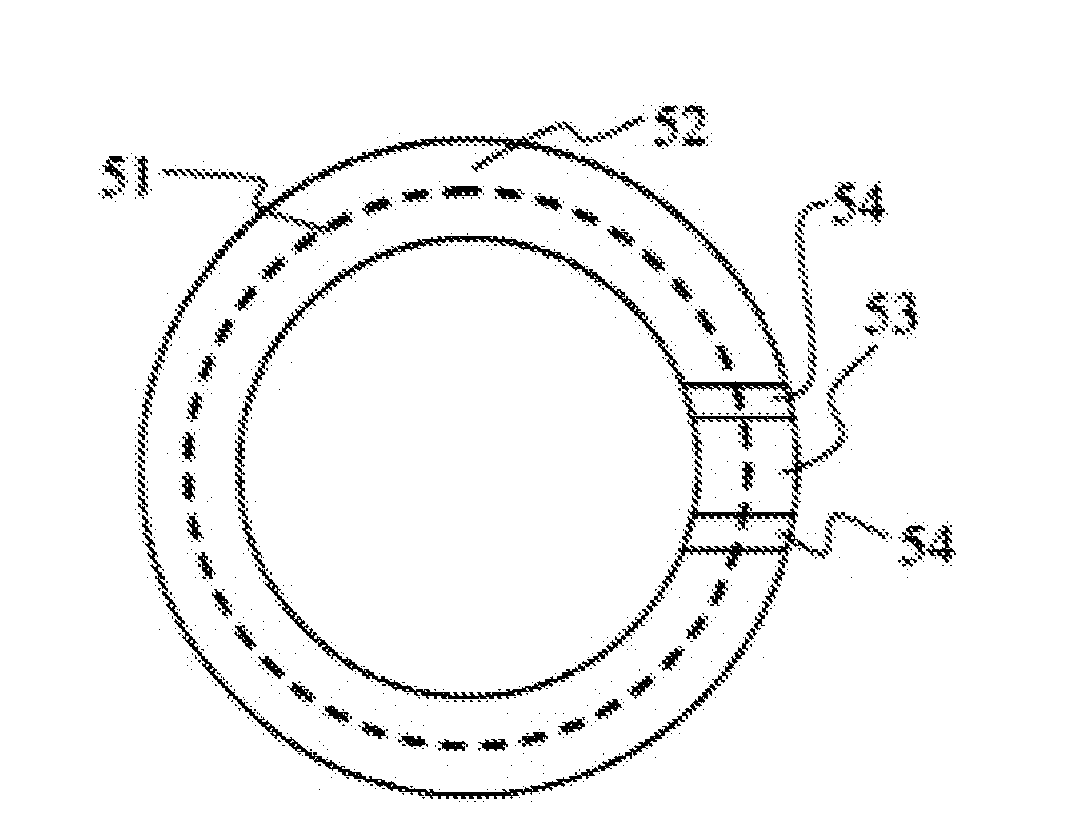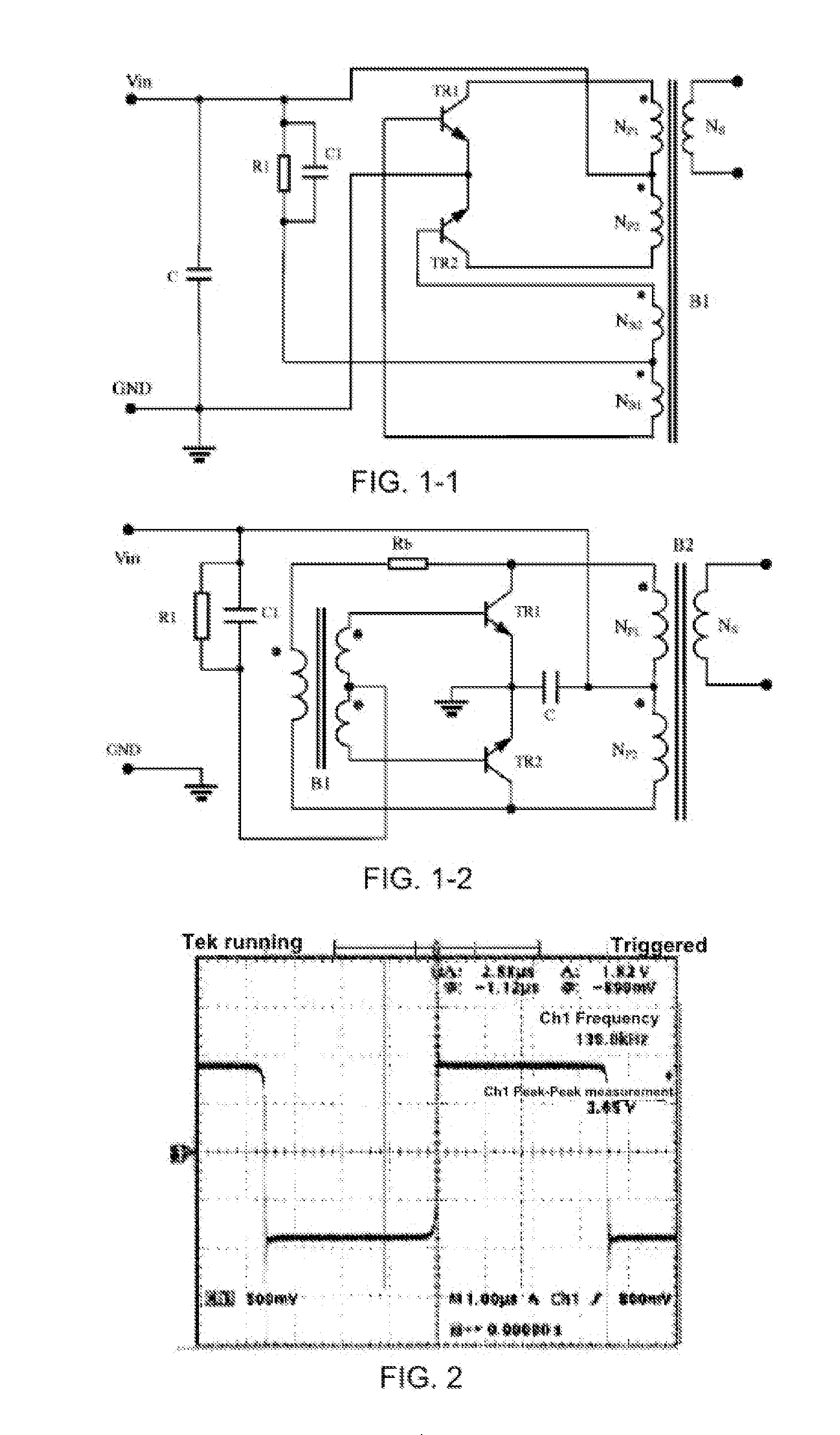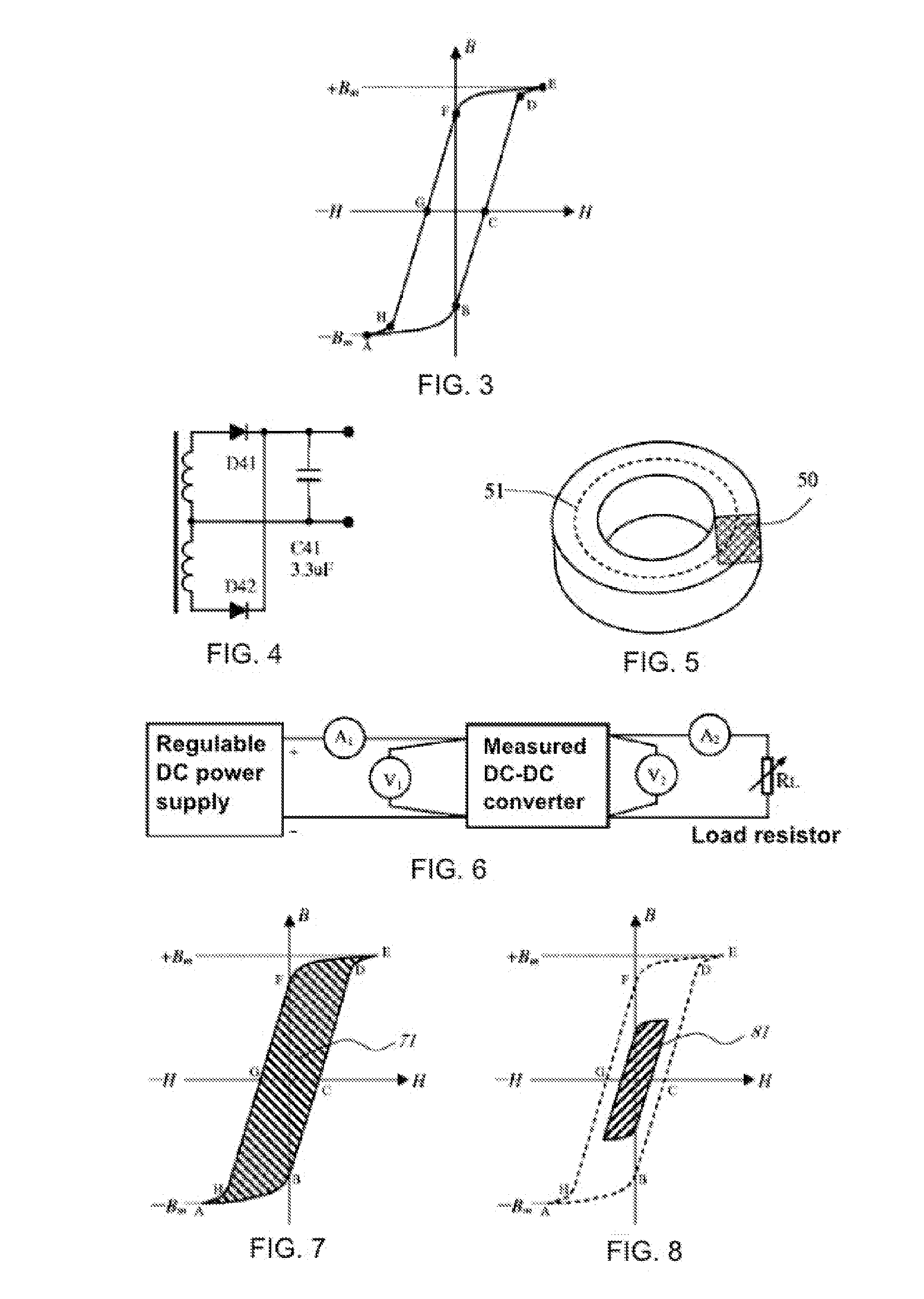Magnetic Core For Transformer
a transformer and magnetic core technology, applied in the direction of transformers/inductance magnetic cores, cores/yokes, fixed transformers, etc., can solve the problems of increased voltage drop loss, difficult selection between these parameters, and inability to further increase efficiency, so as to improve efficiency and reduce the number of coil turns, the effect of improving the efficiency of the self-excitation push-pull converter
- Summary
- Abstract
- Description
- Claims
- Application Information
AI Technical Summary
Benefits of technology
Problems solved by technology
Method used
Image
Examples
embodiment 1
[0092]FIGS. 9-1 to 9-4 show the magnetic core of embodiment 1 of this invention, the magnetic core is a magnetic ring of closed magnetic path without air gap, the ring is in cylindrical shape, comprising a thick part and a thin part of the same material, the thin part has a length of over 0.05 mm, and less than one eighth of the total magnetic path length; and the sectional area of the thin part is below 80% and above 4% of the sectional area of the said thick part.
[0093]To clearly demonstrate the effect of this embodiment, in embodiment 1 of this invention, the thick part has the same sectional area as that of the magnetic core in the existing technology, and the sectional area of the thin part is smaller than that of the magnetic core in the existing technology. The ratio of the thick part sectional area to thin part sectional area is the reciprocal of the percentage points in the technical plan, denoted as constant k, as the reciprocal of the above-mentioned “below 80% and above ...
embodiment 2
[0125]FIGS. 9-1 to 9-4 show the structure of the magnetic core of embodiment 2 of this invention, the magnetic core is a magnetic ring of closed magnetic path without air gap, the ring is in cylindrical shape, consisting of a thick part and a thin part of the same material, the thin part has a length of over 0.05 mm, and less than one eighth of the total magnetic path length; and the sectional area of the thin part is below 80% and above 4% of the sectional area of the said thick part.
[0126]To clearly demonstrate the effect of this embodiment, in the magnetic core of embodiment 2 of this invention, the sectional area of the thin part is 4% that of the thick part, i.e. in embodiment 2 of this invention, the magnetic core has an outer diameter of 5 mm, with the sectional area of thick part being 1.5 mm2 and that of thin part being 0.06 mm2, actually, the thin part 53 in FIG. 9-1 is cut using cutting technique, the diameter of the thin part is 0.276±0.02 mm, i.e. the k value is 25, due...
embodiment 3
[0131]The magnetic core shown in structural drawings FIGS. 9-1 to 9-4 are still used in embodiment 3, the magnetic core is a magnetic ring of closed magnetic path without air gap, the ring is in cylindrical shape, consisting of a thick part and a thin part of the same material, the thin part has a length of over 0.05 mm, and less than one eighth of the total magnetic path length; and the sectional area of the thin part is below 80% and above 4% of the sectional area of the said thick part.
[0132]In the two embodiments above, the implementation effect is demonstrated with two extreme values of k, to clearly present the effect of this embodiment, in embodiment 3, the median value 2 is taken for constant k. In the application of embodiment 1 of this invention, the magnetic core has an outer diameter of 5 mm, with the sectional area of thick part being 1.5 mm2 and that of thin part being 0.75 mm2, i.e. the k value is 2, and the thin part has a length of 1 mm. No coil will be made on the ...
PUM
| Property | Measurement | Unit |
|---|---|---|
| total magnetic path length | aaaaa | aaaaa |
| outer diameter | aaaaa | aaaaa |
| internal resistance | aaaaa | aaaaa |
Abstract
Description
Claims
Application Information
 Login to View More
Login to View More - R&D
- Intellectual Property
- Life Sciences
- Materials
- Tech Scout
- Unparalleled Data Quality
- Higher Quality Content
- 60% Fewer Hallucinations
Browse by: Latest US Patents, China's latest patents, Technical Efficacy Thesaurus, Application Domain, Technology Topic, Popular Technical Reports.
© 2025 PatSnap. All rights reserved.Legal|Privacy policy|Modern Slavery Act Transparency Statement|Sitemap|About US| Contact US: help@patsnap.com



